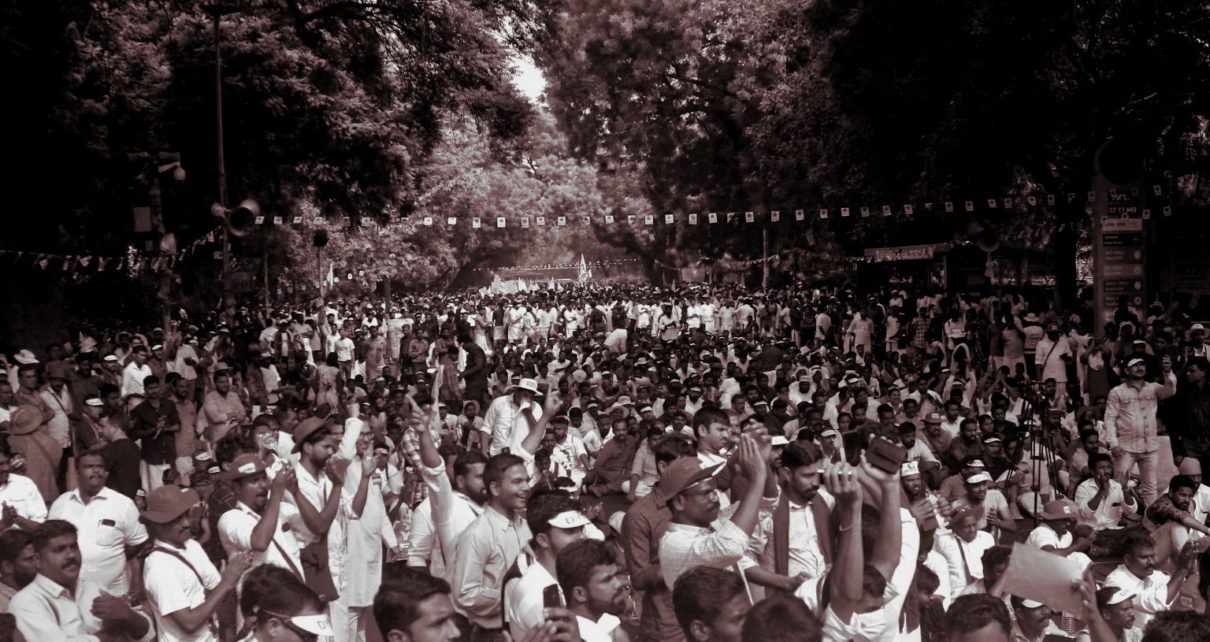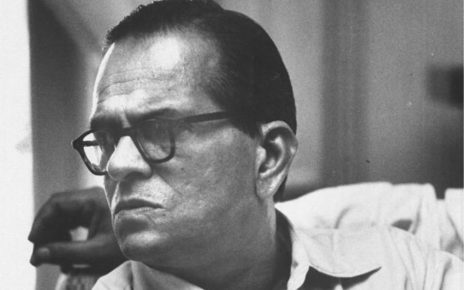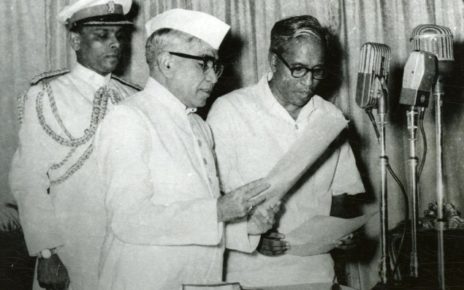(Article published in People’s Democracy, January 20, 2019.)
The Modi government has got a Constitutional amendment adopted in Parliament providing for 10 percent reservation for economically weaker sections in the general category, i.e., those who are not in the Scheduled Castes (SCs), Scheduled Tribes (STs), or, Other Backward Classes (OBCs).
Election Ploy
The Constitutional Amendment Bill was passed in great haste – in a span of three days beginning from the union cabinet decision to its adoption by both the houses of parliament. This has, no doubt, been done with an eye to the forthcoming Lok Sabha elections which is just a few weeks away.
The step also smacks of desperation. The defeat in the assembly elections of Rajasthan, Madhya Pradesh and Chattisgarh has obviously unnerved the BJP and it is looking for ways to retrieve lost ground. The deepening agrarian crisis and growing unemployment has led to an increasing number of caste groups demanding reservation. The Modi government hopes to appease such demands with the new provision of 10 percent jobs for the economically weaker sections.
The question of providing a quota for jobs and education for the poor of the general category is not a new issue. It came up when the National Front government under V P Singh decided to implement the Mandal Commission recommendation for reservations in jobs for the OBCs in 1990. This decision led to a sharp division and virulent agitation, particularly in North India, against the reservation for OBCs by upper castes.
The CPI(M) upheld reservation for the OBCs on the grounds that they had suffered social discrimination which had, as per the constitution, made them “socially and educationally backward”. Hence, just like the SCs and STs, the OBCs also require reservation.
However, differing from the Mandal Commission, the CPI(M) held that there should be an economic criteria within the OBC reservation. This is because, within the OBCs, there is greater differentiation with some sections being better off with land and other resources. If the genuinely needy in these communities are to benefit from reservations, then the economic criteria is essential to differentiate them from those well off.
In the case of SCs and STs, the CPI(M) has consistently supported reservations for them without any economic criteria as they are sections who have been subjected to centuries of vicious social oppression under the caste system which continues to this day.
Karpoori Thakur Formula
This was not a stand taken newly by the CPI(M) at that time. Earlier, the United Front government headed by EMS Namboodiripad in Kerala had set up a commission headed by Nettur Damodaran to look into the question of reservations. This commission had submitted a report which recommended that an economic criteria be introduced within the OBC reservation. At that time, only the CPI(M) had supported the report when it was discussed in the state assembly. In 1978, when the Karpoori Thakur government in Bihar announced reservations for the OBCs, there was a strong anti-reservation movement. At that time, talks were held between the then CPI(M) general secretary, EMS Namboodiripad, and Karpoori Thakur, who was a Lohiaite socialist. The outcome of these talks was a formula for reservation which was known as the Karpoori Thakur formula.
The pattern of reservation introduced in Bihar provided for the economic criteria within the reservation for certain backward classes by having two lists. The first annexure provide for 12 percent reservation without the economic criterion for the most backward classes and annexure II provided 8 percent reservation with economic criterion for other backward classes. Further, there was three percent reservation for women and three percent for the poor of the forward classes. This system was working in Bihar for more than a decade when the V P Singh government announced reservation for OBCs.
CPI(M) Stand
The CPI(M) formulated its stand on reservation for OBCs in 1990 as follows:
a) There should be 27 percent reservation for OBCs, with an economic criteria to exclude the better off sections. If the posts are not filled from the poorer sections, it must revert back to within the OBC category.
b) There should be some quantum of reservation (5 to 10 per cent) for the poorer sections within the general category.
c) The CPI(M) also stated that reservation can provide only some limited relief and it is not a solution to the basic problems of backwardness and unemployment. There has to be radical land reform, break-up of the concentration of wealth, and balanced economic development to generate employment to cater to the all-round progress of the people.
d) The CPI(M) also had a class standpoint on dealing with caste discrimination, exclusion and reservation as a form of affirmative action. The bourgeois parties seek to utilize reservation as an instrument for perpetuating caste divisions and identity politics based on caste. Some of the organisations of the oppressed castes also seek to confine the issue of social justice narrowly to reservation in jobs.
For the CPI(M), the question of uniting the working people and poor of all castes and communities is paramount. This is the only way the existing oppressive socio-economic order can be fought. It is with this approach to forge the unity of the poorer sections of all castes and to overcome the divisions perpetuated by the issue of reservation that the CPI(M) advocated providing some quantum of reservation for the poorer sections within the general category.
Earlier Efforts
In the aftermath of the implementation of the Mandal Commission report, several political parties accepted the stand that the poor in the upper castes should also be provided some relief. In fact, V P Singh had proposed such a measure while announcing the implementation of the reservation for OBCs.
The Narasimha Rao government, in 1991, issued an order for 27 percent reservation for OBCs within which an economic criteria was laid out; 10 per cent was set apart for the economically weaker sections in the general category. This was broadly in conformity with the approach of the CPI(M). However, the Supreme Court in 1992 set aside reservation for the general category while upholding the 27 percent reservation, after excluding the creamy layer.
The CPI(M) had welcomed the judgement upholding 27 per cent reservation, excluding the creamy layer. It also stated that the government must devise a method whereby the poor and needy of the non-reservation communities get some relief.
The CPI(M) has also consistently maintained that any such relief to the general category cannot be at the expense of, or, by diluting the statutory reservation provided for SCs, STs and OBCs.
The above background is necessary to understand the CPI(M)’s position regarding the step taken by the Modi government. After having miserably failed in creating two crore jobs a year, as promised, and unable to tackle the agrarian crisis, the Modi government was looking for some election ploy before the general elections.
False Criteria
There was an urgent need for the BJP government to divert the attention of the people from the dismal fact that, in the year 2018 alone, nearly 11 million existing jobs were lost. But the manner in which the Modi government has devised the 10 percent reservation for “economically weaker sections” is fraudulent. The way in which the criteria has been fixed for deciding who are economically deprived shows that it is not meant for the genuinely deprived and poorer sections.
As per the criteria set out, those having family income of less than Rs 8 lakh per annum, or, who have less than five acres of agricultural land, or, have a residential flat of less than 1,000 square feet, or, a residential plot of less than 100 yards in notified municipalities, or, 200 yards in non-notified municipalities will be eligible for reservation. This would mean 95 percent of the general category of people will come under the purview of reservation. This would defeat the very purpose of giving reservation for the poorer sections.
The CPI(M) is strongly opposed to extending reservation on the basis of this criteria to the general category. There is another point which needs to be clarified. The constitutional amendment, as adopted, only provides for 10 per cent reservation for economically weaker sections in the general category. The amendment does not set out the criteria referred to above. The CPI(M) MPs in parliament voted for the constitutional amendment as the Party supports such reservation in principle. But the Party will oppose any legislation, or, notification setting out the above criteria.
Dismal Record in Quotas
The opposition to this measure also stems from the fact that the existing quotas for SCs, STs and OBCs in government posts and higher educational institutions are not being filled up. The latest figure show that only 21.7 percent of the posts reserved for OBCs have been filled up as compared to the quota of 27 percent. In both SC and ST categories, there is shortfall in group A and B and a large number of posts are lying vacant.
In the case of higher education admissions, the enrollment of SCs, STs and OBCs are lagging behind. In the case of OBC reservation in private educational institutions, the 93rd constitutional amendment of 2006, which provided this, remains unimplemented since there has been no enabling legislation. The CPI(M) has demanded that immediate steps should be taken to fill up the quotas for SCs, STs and OBCs in all government sectors and in higher education.
The Modi government’s dismal record on this front gives rise to the suspicion that the latest 10 percent reservation for the general category is a ruse to dilute the reservation for the oppressed castes. This suspicion is reinforced by the fact that the RSS is against caste based reservations.
Private Sector Reservation
The other vital issue which has been studiously avoided by the Modi government is the extension of reservation to the private sector. After nearly three decades of neo-liberal policies and privatization, the scope for reservation in the government and public sector is getting severely limited. Without having reservation in the private sector, reservation as affirmative action is getting increasingly eroded.
The Modi government’s hypocritical stance is exposed by the fact that quotas for SCs, STs and OBCs remain unfulfilled in the central government jobs and its failure to extend reservation to the private sector.
There is a standing limit of 50 percent reservation for all categories set out by the Indra Sawhney judgement of the Supreme Court in 1992. The way in which the Constitutional amendment was introduced and adopted in haste shows that the Modi government is only interested in short term electoral gains. It has not put in place a well-thought out measure which can meet the legal-constitutional challenge. It may end up as another election jumla.
(The author is a member of the Polit Bureau of the Communist Party of India (Marxist).)


